MikroTik CRS518-16XS-2XQ Internal Hardware Overview
Inside the system we get a fairly simple and straightforward design, which we tend to expect from MikroTik.
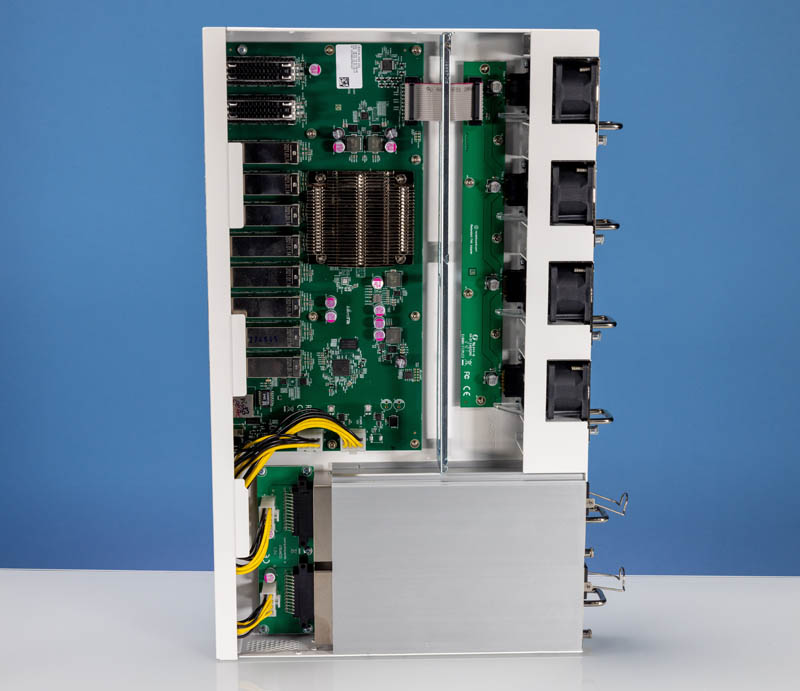
Inside the system, there is a main switch PCB, then a fan PCB, and finally another small PCB to change the PSU recepticles to locking wiring.
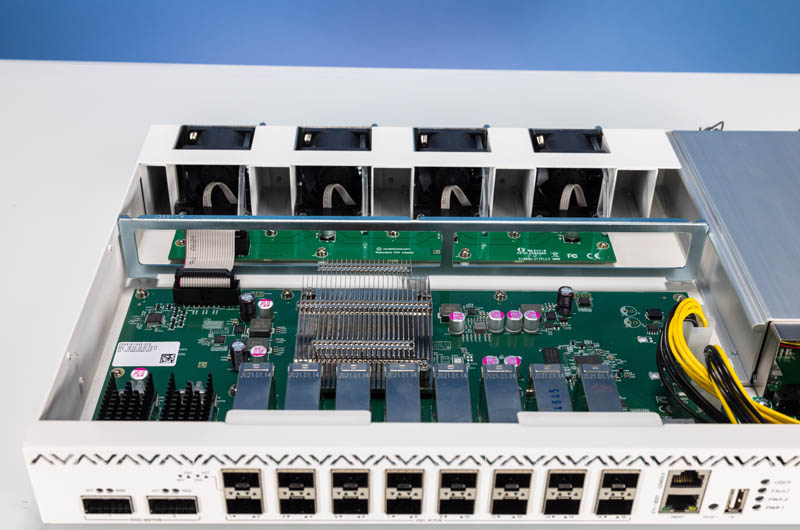
Something we did notice that was different here was the relatively massive heatsinks on the QSFP28 cages. These are much larger than we typically see on 100GbE NICs and other switches. This just caught our attention.
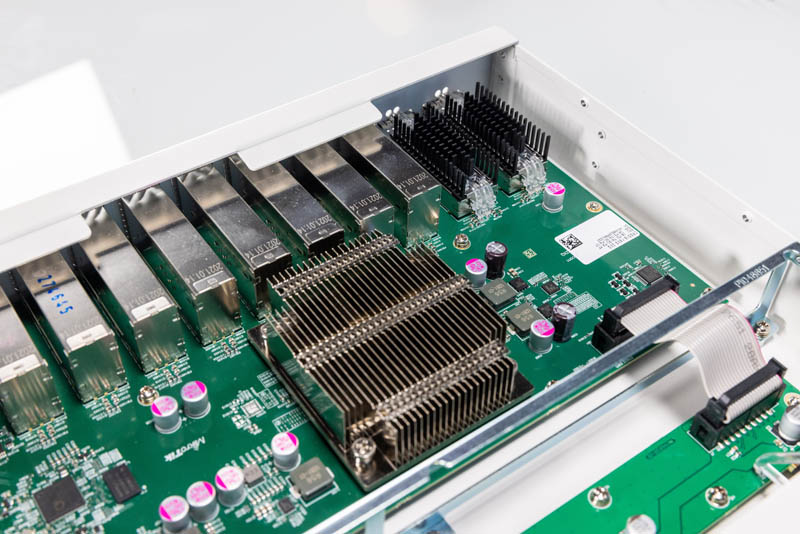
Something that was also very noticable is that the switch heatsink was relatively small. We have seen some very large MikroTik heatsinks over the years, and this is not one of them.
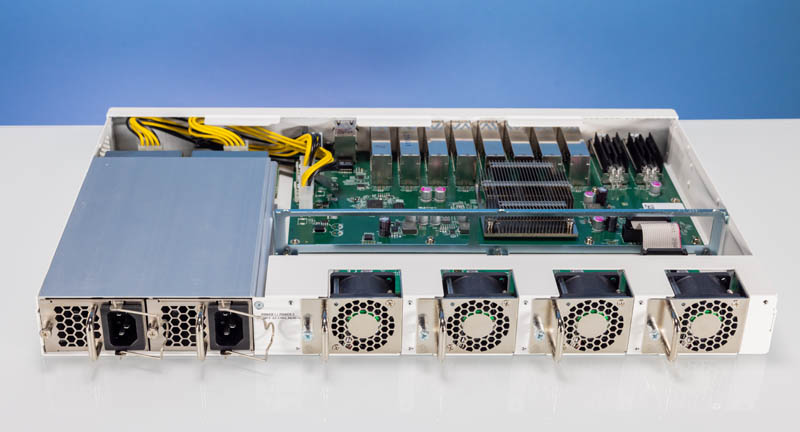
Here is the block diagram for the Marvell 98DX8525 switch chip that is under that heatsink.
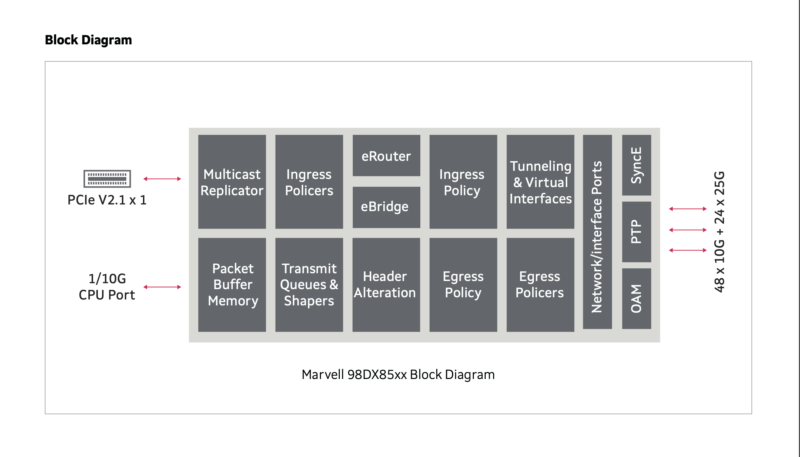
The fan PCB is connected via a ribbon cable to the main switch board.
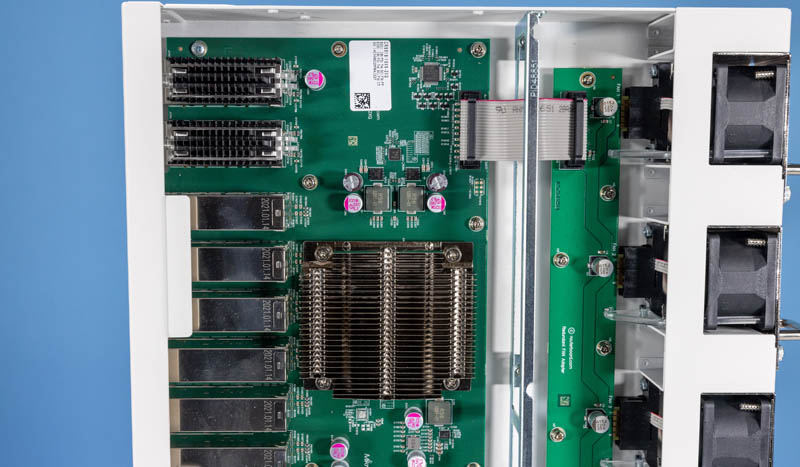
Overall this is a very straightforward design, but with a relatively small switch chip heatsink. A big part of that is that if the SFP28 and QSFP28 ports used lower power optics, this might have been a passive design instead. With the heat from those optics, more airflow is needed through the switch so a smaller heatsink can be used on the low-power Marvell chip.
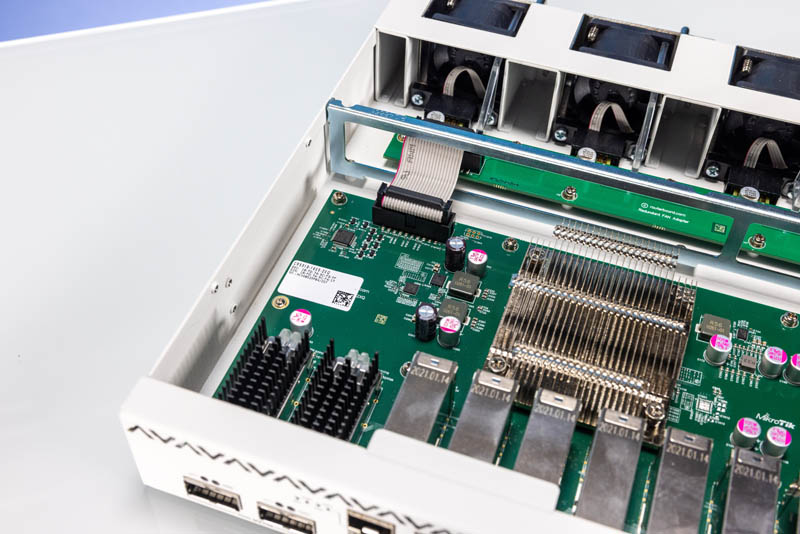
Next, let us discuss management and performance.




Rohit, thanks for the review. Do either this switch or the CRS504-4XQ-IN support stacking?
Oof, they went with a MIPS BE CPU core which essentially means no protection against exploiting the software. This practically means that if you have any means to getting into the heap or the stack (including crafted packets to the data plane that go up to the management plane for flow setup) is game over security-wise for this management processor.
Considering the CRS504-4XQ-IN has 4x 100G (or 16x 25G) ports, it seems quite expensive to double the price in order to get 16x 25G plus 2x 100G ports. If you say both units give you 16x 25G plus 2x 100G for $800, then with the unit reviewed here you’re paying another $800 again for an extra eight 25G ports, but no additional 100G ports.
I’m also not sold on Mikrotik’s quality control. The first switch I bought (a CRS309) made a funny hiss and died immediately when I first connected PoE power to it, so I had to get it exchanged for another one. Recently after waiting for months I finally got hold of an RB5009Upr+S+IN which didn’t power up at all over PoE, and it turned out that there was a mistake in their datasheet and it only supports passive PoE on all but one port, not 802.3af like it was advertised as (they’ve now corrected this). So I had to return that for a refund but of course lost money on the shipping. So not very impressed with them at the moment.
Also there’s an Easter egg in the last line of this article, it says “Mirko” instead of “Mikro”.
No mention or testing of MLAG?
It would be really great to see a dedicated article testing inter-vlan routing speeds across different switches…near as I can tell nothing short of enterprise-grade gear can do inter-vlan routing at 10g speeds or higher.
Some of Unifi’s gear advertises itself as L2+ and supporting inter-vlan routing but what it DOESN’T say is that throughput is significantly reduced for traffic crossing VLANs. Hardware from TP-Link’s Omada series does the same thing…
I would love to see this added to the standard STH test suite for switches and, as I said above, an article dedicated to the topic.